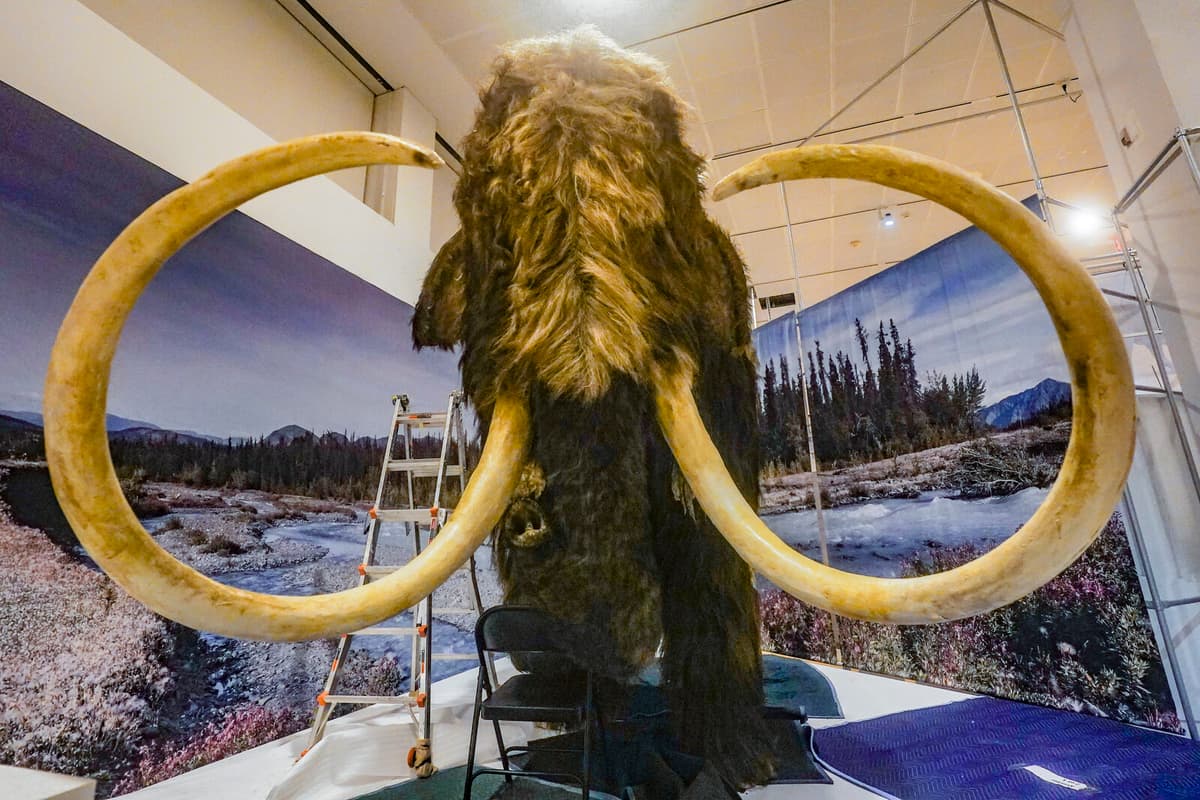”After being absent for over 10,000 years, we are proud to be able to reintroduce the giant wolf to its rightful place in the ecosystem.”
Colossal Biosciences' press release on April 7 about the birth of three giant wolves and thus successfully recreating an extinct species became an immediate world news. That it was just giant wolves, or dire wolves, which in recent years have had a popular cultural revival as pets in the TV series "Game of thrones", hardly hurt.
"We can take five, thank you”, commented the official account of the series on social media about the three cubs Romulus, Remus and Khaleesi.
The breakthrough, called the world's first "no-extinction" by the company (de-extinction in English), was achieved by researchers at Colossal using CRISPR to modify ordinary wolf cells with characteristics identified in giant wolf cells from tens of thousands of years old DNA, and then let dogs act as surrogate mothers.
However, they quickly received criticism from researchers who argued that it was not actually giant wolves, but rather ordinary wolves that had been genetically modified to resemble their extinct relatives.
Research Director Beth Shapiro thinks they have been clear about what they have done, namely replacing certain parts of the cell to recreate the most important characteristics of a giant wolf, she says in an interview with TT in Stockholm.
What we are working on is functional no-extinction. We know it is not possible to recreate something genetically identical to an animal that once lived, and that is not the goal. The goal is to recreate an animal that can fit into the living environment, that's why we choose to call it a giant wolf.
Woolly mammoth and Tasmanian devil
Giant wolf or not, the cubs that live today in a enclosure on a secret location in the USA are Colossal's greatest success since it was started by Harvard professor George Church and billionaire Ben Lamm in 2021, with the dream of reviving woolly mammoths. Today the company is valued at over ten billion dollars and has 130 employed researchers.
In addition to the mammoth, they are trying to bring back the woolly mammoth and the Tasmanian devil.
We want to develop technology that can both give extinct species life again and help living species avoid extinction, says Shapiro.
The purpose of bringing back the mammoth, which went extinct around 4,000 years ago, is said to be, among other things, that they could contribute to recreating the grassy landscape known as the mammoth steppe, which spread over northern Europe and Asia during the last ice age. This would in turn help counter global warming and protect the Arctic permafrost, according to Colossal.
Linda Laikre, professor of population genetics at Stockholm University, is however skeptical about whether such a thing can be achieved in reality.
The ecosystem has not stood still. The areas where the mammoth disappeared have changed and evolution has continued for thousands of years since then. It sounds very utopian to think that it would work that easily, she says.
But Colossal's goal is to have the first calves born as early as 2028, with elephants as surrogate mothers.
There is a lot that remains to be done in our work with elephants for us to achieve it, but we are sticking to the plan for now, says Beth Shapiro.
The work for still living species is however an equally important part of the company, she says.
Endangered red wolf
The same day as they reported on the giant wolves, the company also announced that they had given birth to four clones of the critically endangered red wolf. If they are able to reproduce further, it could increase the genetic diversity and strengthen the resistance of the species, the idea is.
It's really proof that the tools can be used to strengthen biological diversity, says Shapiro.
Linda Laikre at Stockholm University sees above all that Colossal can contribute with technological development.
They will contribute to taking the technology forward on how to handle genetic material, how to move genes between species and so on. It will be of great importance in many situations.
At the same time, she is worried about the company's rhetoric, which confidently describes its work as "the solution" to the problems of extinction.
The danger is that it signals that things are simpler than they are, that you don't see the big problems with extinction because you think you can recreate the species that are disappearing, says Linda Laikre.
The big thing is to keep the species that are not extinct, the threats to small populations and the lack of insight and efforts to ensure long-term adaptability for those species.
Beth Shapiro emphasizes that the work on extinct species should not replace traditional conservation work, you have to do both. But the attention can never hurt, she thinks, and has no problem with them being compared to "Jurassic Park".
– This is not "Jurassic Park", there is no DNA from dinosaurs. But if people think "Jurassic Park" or hear about de-extinction and find our website, then they will get a lot of information about extinction and conservation. Then we can reach people we wouldn't have reached otherwise.
The giant wolf (Canis dirus) was larger and had a more massive skull than the modern wolf (although with a smaller brain). It lived in hundreds of thousands of years in today's North America until they went extinct 13,000 years ago when the ice age ended.
Genetically, the giant wolf separated from the wolf's ancestors 5.5 million years ago, and it has been shown that they are not very close relatives of the wolf.
Now the company Colossal claims to have successfully recreated the wolf. This is how it is said to have happened:
+ DNA was mapped from a 13,000-year-old tooth from a giant wolf, as well as a 72,000-year-old giant wolf skull.
+ 20 characteristic differences between the giant wolf's DNA and the DNA of the ordinary wolf were identified.
+ Using CRISPR, 15 of them were introduced into wolf cells. The remaining five had shown to be able to cause deafness and blindness in wolves, where a protective mutation was introduced instead.
+ The wolf blood cells were then inserted into empty dog egg cells. Large dogs then acted as surrogate mothers.
+ Three cubs were born in 2024. They have white, thick fur and are around 20 percent larger than ordinary wolves.
Source: Britannica, National Geographic, Science, Colossal Biosciences






